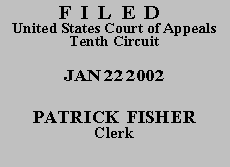

| LOURIE MCCLARAN, Husband;
KAREN MCCLARAN, Wife,
Plaintiffs-Appellants, v. UNION CARBIDE CORPORATION; UCAR INTERNATIONAL, INC.; UCAR CARBON COMPANY, INC., Defendants-Appellees. |
|
Appellants Lourie and Karen McClaran challenge the decision of the United States District Court for the Northern District of Oklahoma granting summary judgment for appellees, contending there were disputed issues of fact. We affirm.
I. Background
Mr. McClaran was severely burned on August 14, 1997, when a furnace he was working on in the melt shop of Sheffield Steel Mill exploded. The explosion was the result of water leaking from the furnace's roof cooling system into the molten steel within the furnace. The roof on this type of furnace is hollow, allowing it to be cooled with internal sprays of water. When the roof cooling system is functioning properly, the water is removed through a vacuum system. In the event the vacuum system fails, there is an overflow drain on what is referred to as the "tap side" of the furnace. In addition, water may also escape through hatches designed to permit visual inspection of the roof. This roof cooling system was manufactured, sold, and distributed by the Union Carbide Corporation.
After the accident, Sheffield Steel conducted an investigation into its causes and determined they were twofold. First, there was a hole in one of the vacuum lines, which prevented the vacuum system from functioning properly and allowed water to collect in the roof. Second, there was a hole in the roof plate, allowing the collected water to enter the furnace itself, creating an admixture of solid steel buildup, liquid steel, and water, which resulted in the series of explosions that injured Mr. McClaran.
The water did not escape through the tap side overflow drain because the furnace was tilted to the opposite, or "slag" side. Further, there were two to three feet of dust and debris blocking the inspection hatches at the time of the accident. There was evidence that, in any case, these inspection hatches could not function as an adequate back-up for the vacuum system.
The Sheffield Steel accident report set forth several recommendations, including that all leaks be fully investigated and corrected. Evidence showed that Sheffield employees had noticed water escaping from the overflow drain on a regular basis but did not investigate the cause of the problem. A subsequent report by the Occupational Safety and Health Administration recommended that an additional overflow drain be placed on the slag side of the furnace, if feasible.
On August 4, 1999, the McClarans filed their complaint, alleging that Mr. McClaran's injuries resulted from a defect in the furnace roof system as manufactured by Union Carbide. Union Carbide moved for summary judgment, arguing that the McClarans had failed to produce any evidence that the furnace roof system was defective when it left Union Carbide's possession and control. The district court agreed and entered summary judgment for Union Carbide.
II. Discussion
Summary judgment is warranted when there is no genuine issue of material fact and the moving party is entitled to judgment as a matter of law. See Fed. R. Civ. P. 56(c). We review the district court's decision to grant summary judgment de novo, applying the same standard as the district court. Adler v. Wal-Mart Stores, Inc., 144 F.3d 664, 670 (10th Cir. 1998).
In its summary judgment motion, Union Carbide asserted that the McClarans failed to offer any proof that the roof system was defective as manufactured. Union Carbide also argued that the proximate cause of the explosion was the failure of Sheffield Steel employees to keep the inspection hatches free of dust and debris, and otherwise inspect and maintain the furnace. The McClarans countered that the defect in the furnace was the absence of a second overflow drain on the slag side of the furnace, and that this defect was the proximate cause of the accident.
The district court applied the standard articulated in Dutsch v. Sea Ray Boats, Inc., 845 P.2d 187, 190 (Okla. 1992): to succeed on a theory of product liability, the plaintiff must prove that (1) the product was the cause of the injury; (2) the defect existed in the product at the time the product left the manufacturer's possession and control; and (3) the defect made the product unreasonably dangerous to the user.
Here, the McClarans argued that the accident would not have occurred if a slag side overflow drain had been included in the design, and that failure to include the drain was a defect that was present when the roof-cooling system left the possession and control of Union Carbide. As the district court emphasized, however, the slag side drain was only necessary if the vacuum system failed. The McClarans presented no evidence that the vacuum system was prone to failure or otherwise inherently defective as manufactured.
III. Conclusion
Having reviewed the briefs and appendices filed by the parties, we conclude the district court did not err in granting summary judgment for defendants. Accordingly, we AFFIRM the judgment of the United States District Court for the Northern District of Oklahoma.
Entered for the Court
Circuit Judge
*. This order and judgment is not binding precedent, except under the doctrines of law of the case, res judicata, and collateral estoppel. The court generally disfavors the citation of orders and judgments; nevertheless, an order and judgment may be cited under the terms and conditions of 10th Cir. R. 36.3.